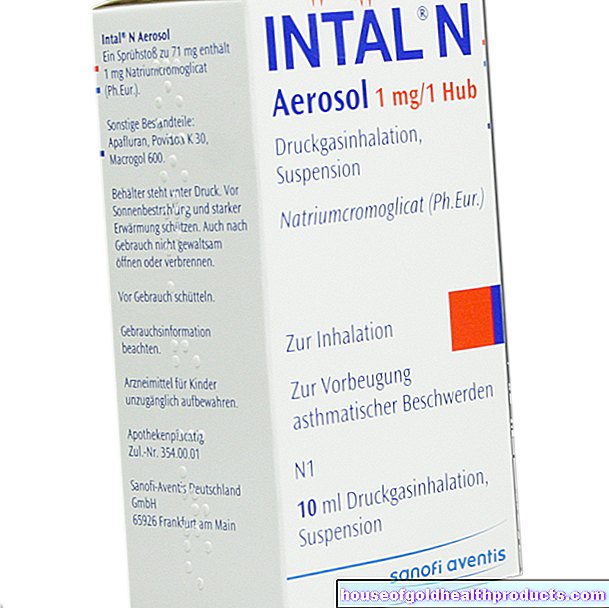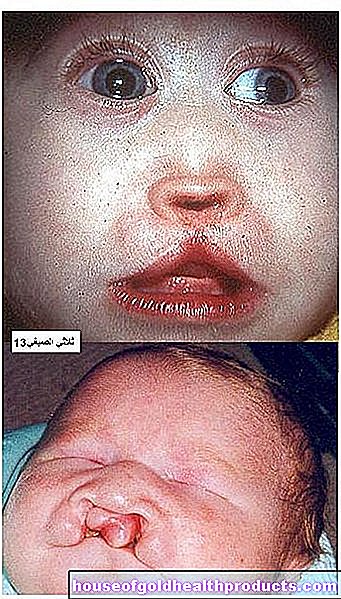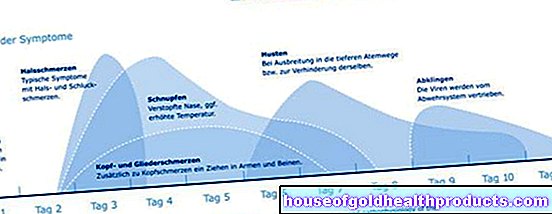Trimethoprim
Benjamin Clanner-Engelshofen is a freelance writer in the medical department. He studied biochemistry and pharmacy in Munich and Cambridge / Boston (USA) and noticed early on that he particularly enjoyed the interface between medicine and science. That is why he went on to study human medicine.
More about the experts All content is checked by medical journalists.The active ingredient trimethoprim is an antibiotic that interferes with the folic acid metabolism of bacteria. As a result, the germs can no longer divide and multiply - their growth is inhibited. Trimethoprim is therefore called a bacteriostatic agent. Here you can read everything interesting about the effects and use of trimethoprim as well as possible side effects and interactions.
This is how trimethoprim works
Both humans and microorganisms such as fungi and bacteria need folic acid (vitamin B9) as a component of enzymes (as a so-called cofactor), which are necessary to regenerate the building blocks of the genetic material (DNA). Since the genome has to double with every cell division and therefore with every type of growth, folic acid has a vital role to play.
In order to be used by the cells, however, the folic acid must first be activated in the body. To do this, it is converted twice by the enzyme DHFR (dihydrofolate reductase), which first produces DHF (dihydrofolate) and then THF (tetrahydrofolate). THF is the active form of the vitamin and can be used for metabolic processes.
Since the bacterial DHFR enzyme is very different from the human DHFR enzyme, it can be specifically inhibited with suitable active ingredients such as trimethoprim. As a result, the bacteria are no longer able to duplicate their genetic make-up - they can no longer divide. DHFR inhibitors such as trimethoprim therefore have a bacteriostatic effect: They do not kill the bacteria, but only inhibit their growth. This gives the body's immune system a chance to get a bacterial infection under control.
Trimethoprim uptake, breakdown and excretion
After ingestion, the active ingredient is quickly and completely absorbed into the bloodstream through the intestinal mucosa. The highest concentrations are reached there after about one to four hours. The antibiotic reaches the infection site via the blood.
About a fifth of the dose taken is broken down by the liver, the rest is excreted unchanged via the kidneys with the urine, which makes the active ingredient suitable for the treatment of urinary tract infections. As a result, the trimethoprim blood level has halved again eight to 14 hours after ingestion.
When is trimethoprim used?
Trimethoprim as a single active ingredient is only rarely used in bacterial infections, as bacterial resistance to it can quickly develop (i.e. bacteria become insensitive to the active ingredient). Instead, a combination of trimethoprim and sulfamethoxazole is usually prescribed, which is also called cotrimoxazole in a fixed 1: 5 composition.
Trimethoprim as the sole antibiotic is only approved for the short-term treatment of uncomplicated urinary tract infections and for the long-term prevention of recurring urinary tract infections.
This is how trimethoprim is used
The antibiotic trimethoprim can be taken in tablet or juice form. The juice is particularly suitable for children under six years of age, as they usually find it difficult to swallow tablets.
For the treatment of acute bacterial infections, children over the age of twelve and adults take 150 to 200 milligrams of trimethoprim twice a day with a glass of water without regard to meals. For younger children, the dosage is usually adapted to their body weight. The antibiotic is approved for patients who weigh more than five kilograms.
The duration of therapy usually extends over three to seven days. For long-term prevention over six weeks to six months, 100 milligrams of trimethoprim are taken once a day in the evening.
What are the side effects of trimethoprim?
Trimethoprim side effects such as loss of appetite, taste disturbances, pain in the upper abdomen, nausea, vomiting, diarrhea, rashes and inflammation of the tongue and gums appear in one in ten to one hundred people treated.
Occasionally one also observes fever, changes in blood values and infections with fungi or trimethoprim-resistant bacteria, the latter especially with long-term use of the antibiotic.
What should be considered when taking trimethoprim?
The active ingredient trimethoprim is partially converted in the liver by the cytochrome P450 2C8 enzyme system. As a result, other active ingredients can accumulate, which are also broken down by this enzyme. These include, for example, the blood sugar lowerers repaglinide and rosiglitazone (anti-diabetic agents), the dehydrating agent torasemide and the strong pain reliever buprenorphine.
The effectiveness of anticoagulants such as warfarin can be increased by trimethoprim, which is why the coagulation values should be checked closely.
Taking trimethoprim together with certain antihypertensive agents can increase blood potassium levels. Examples of such active ingredients are ACE inhibitors (enalapril, ramipril), sartans (valsartan, candesartan) and potassium-sparing dehydrating agents (amiloride, triamterene, spironolactone).
The effect of the pill (for hormonal contraception) may be restricted by trimethoprim. Women should therefore also use non-hormonal contraception during antibiotic treatment (e.g. with a condom).
Intensive sun exposure should be avoided during treatment.
Possible tooth discoloration from antibiotic therapy can be prevented through intensive oral hygiene.
If severe and prolonged diarrhea occurs during or shortly after antibiotic therapy, a doctor should be called.
Trimethoprim should not be used by pregnant women. Breastfeeding women may take the antibiotic if necessary. It only passes into breast milk in small amounts.
How to get trimethoprim medication
All antibiotics are only available in Germany with a doctor's prescription in pharmacies. The aim is to prevent the improper use of antibiotics, because they promote the development of resistance in bacteria.
Since when has trimethoprim been known?
Trimethoprim was first approved for use in humans in 1962, followed by the combination cotrimoxazole, which is still used today, six years later. Both antibiotics are now sold as generics, with the combination being offered by many manufacturers. Preparations that only contain the active ingredient trimethoprim alone, on the other hand, have become rare.
Tags: baby toddler nourishment menshealth





























